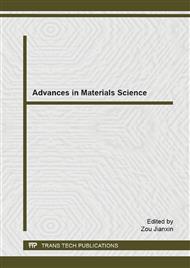[1]
Walker P, EnklingN, Mericske-Stern R, et al. Immediate implant placement in mandible and prosthetic rehabilitation by means of all-zirconium oxide restorations: case report of a woman with a history of periodontitis. Quintessence Int. 2014 May; 45(5): 397-404.
Google Scholar
[2]
Sanz-Martín I , Sanz-Martn I, Figuero E, et al. Clinical efficacy of immediate implant loading protocols compared to conventional loading depending on the type of the restoration: a systematic review. Clin Oral Implants Res. 2014 Jun 11.
DOI: 10.1111/clr.12428
Google Scholar
[3]
Susarla SM, Chuang SK, Dodson TB. Delayed versus immediate loading of implants: survival analysis and risk factors for dental implant failure. J Oral Maxillofac Surg. 2008 Feb; 66(2): 251-5.
DOI: 10.1016/j.joms.2007.09.012
Google Scholar
[4]
Sohn DS, Lee JS, Ahn MR, et al. New bone formation in the maxillary sinus without bone grafts. Implant Dent. 2008; 17: 321–331.
DOI: 10.1097/id.0b013e318182f01b
Google Scholar
[5]
Kim TH, Kim SH, Kim YD. Comparison of platelet-rich plasma (PRP), platelet-rich fibrin (PRF), and concentrated growth factor (CGF) in rabbit-skull defect healing. Arch Oral Biol. 2014 May; 59(5): 550-8.
DOI: 10.1016/j.archoralbio.2014.02.004
Google Scholar
[6]
Honda H, Tamai N, Naka N, et al. Bone tissue engineering with bone marrow-derived stromal cells integrated with concentrated growth factor in Rattus norvegicus calvaria defect model. J Artif Organs. 2013 Sep; 16(3): 305-15.
DOI: 10.1007/s10047-013-0711-7
Google Scholar
[7]
Yu B, Wang Z. Effect of concentrated growth factors on beagle periodontal ligament stem cells in vitro. Mol Med Rep. 2014 Jan; 9(1): 235-42.
DOI: 10.3892/mmr.2013.1756
Google Scholar
[8]
Rodella LF, Favero G, Boninsegna R, et al. Growth factors, CD34 positive cells, and fibrin network analysis in concentrated growth factors fraction. Microsc Res Tech. 2011 Aug; 74(8): 772-7.
DOI: 10.1002/jemt.20968
Google Scholar
[9]
Sohn DS, Moon JW, LeeWH, et al. Comparison of new bone formation in the maxillary sinus with and without bone grafts: Immunochemical rabbit study. Int J Oral Maxillofac Implants. 2011; 26: 1033–1042.
Google Scholar


